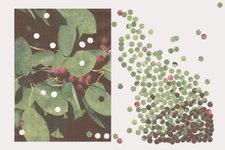Security Check - Orion Magazine
In a gift economy, wealth is understood as having enough to share, and the practice for dealing with abundance is to give it away. In fact, status is determined not by how much one accumulates, but by how much one gives away. The currency in a gift economy is relationship, which is expressed as gratitude, as interdependence and the ongoing cycles
... See moreRobin Wall Kimmerer • The Serviceberry: An Economy of Abundance – Robin Wall Kimmerer
The Serviceberry: An Economy of Abundance – Robin Wall Kimmerer
Robin Wall Kimmereremergencemagazine.org
Conceiving of something as a gift changes your relationship to it in a profound way, even though the physical makeup of the “thing” has not changed. A woolly knit hat that you purchase at the store will keep you warm regardless of its origin, but if it was hand knit by your favorite auntie, then you are in relationship to that “thing” in a very... See more